Geology Reference
In-Depth Information
the result of organic activity. In fact, stromatolites still form
in a few areas where they originate by trapping sediment on
sticky mats of photosynthesizing cyanobacteria, more com-
monly known as blue-green algae (
metabolic process developed, probably
fermentation,
an anaer-
obic process during which molecules such as sugars are split
and release carbon dioxide, alcohol, and energy. As a matter of
fact, most living prokaryotes practice fermentation.
Of course, the nature of the earliest cells is informed
speculation, but we can say that the most signifi cant event in
Archean life history was the development of the autotrophic
process of photosynthesis. These more advanced cells were
still anaerobic and prokaryotic, but as autotrophs they no
longer depended on an external source of preformed organic
molecules for their nutrients. The Archean fossil in Figure 19.20
belongs to the kingdom Monera, which is represented today by
bacteria, cyanobacteria, and archaea.
Figure 19.19). Although
widespread in Proterozoic rocks, they are now restricted to
aquatic environments with especially high salinity where
snails cannot live and graze on them.
Currently, the oldest known stromatolites are from
3.0-billion-year-old rocks in South Africa, but other prob-
able ones have been discovered in 3.3- to 3.5-billion-year-old
rocks near North Pole, Australia. Even more ancient evidence
comes from 3.8-billion-year-old rocks in Greenland that
have tiny particles of carbon that indicate organic activity,
perhaps photosynthesis; but the evidence is not conclusive.
Cyanobacteria, the oldest known fossils, practice photo-
synthesis, a complex metabolic process that must have been
preceded by a simpler process. So it seems reasonable that
cyanobacteria were preceded by nonphotosynthesizing or-
ganisms for which we so far have no fossils. They probably
resembled tiny bacteria, and because the atmosphere lacked
free oxygen, they were
anaerobic
, meaning they required no
free oxygen. They also were probably
heterotrophic,
depen-
dent on an external source of nutrients, rather than
auto-
trophic,
capable of manufacturing their own nutrients as in
photosynthesis. And fi nally, they were
prokaryotic cells,
cells
lacking a cell nucleus and other internal structures typical of
more advanced
eukaryotic cells
(discussed in a later section).
We can characterize these earliest organisms as single-
celled, anaerobic, heterotrophic prokaryotes (
◗
The Paleoproterozoic, like the Archean, is characterized
mostly by a biota of single-celled, prokaryotic bacteria and
cyanobacteria. No doubt thousands of varieties existed, but
none of the more familiar organisms such as plants and ani-
mals were present. Before the appearance of cells capable of
sexual reproduction, evolution was a comparatively slow
process, accounting for the low organic diversity.
A New Type of Cell Appears
The origin of
eukaryotic
cells
marks one of the most important events in life history
(Table 19.1). These cells are much larger than prokaryotic cells;
they have a membrane-bounded nucleus containing the genetic
material, and most reproduce sexually (
Figure 19.20).
Furthermore, they reproduced asexually. Their energy source
was probably adenosine triphosphate (ATP), which can be syn-
thesized from simple gases and phosphate, so it was no doubt
available in the early Earth environment. These cells may have
simply acquired their ATP directly from their surroundings,
but this situation could not have persisted for long because
as more and more cells competed for the same resources, the
supply should have diminished. Thus, a more sophisticated
◗
Figure 19.21). And
many eukaryotes—that is, organisms made up of eukaryotic
cells—are multicellular and aerobic, so they could not have existed
until some free oxygen was present in the atmosphere.
No one doubts that eukaryotes were present by the
Mesoproterozoic. Currently, the oldest known eukaryote is
Bangiomorph
from 1.2-billion-year-old rocks in Canada; it
was multicelled and reproduced sexually. Other Proterozoic
rocks have yielded fossils of unknown affi nities. For example,
◗
◗
Figure 19.19
Stromatolites
b
Different types of stromatolites include irregular mats, columns,
and columns linked by mats.
a
Present-day stromatolites, Shark Bay, Australia.
Source:
b
R.L. Anstey and T.L. Chase,
Environments Through Time
, 1974, MacMillan Publishing Company.
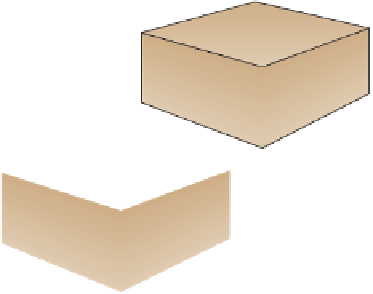






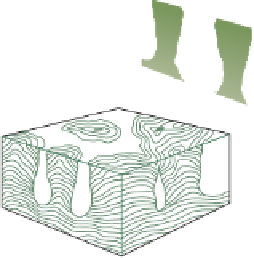









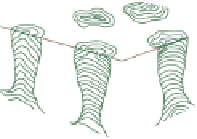

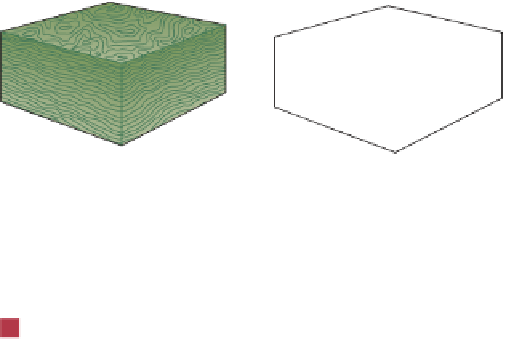


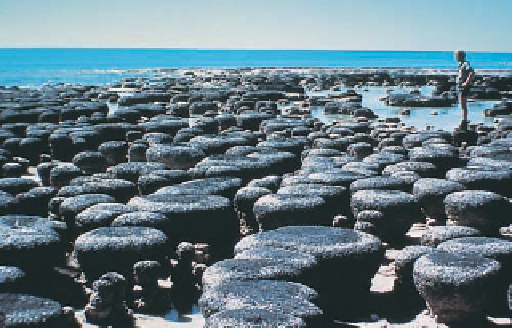
Search WWH ::

Custom Search